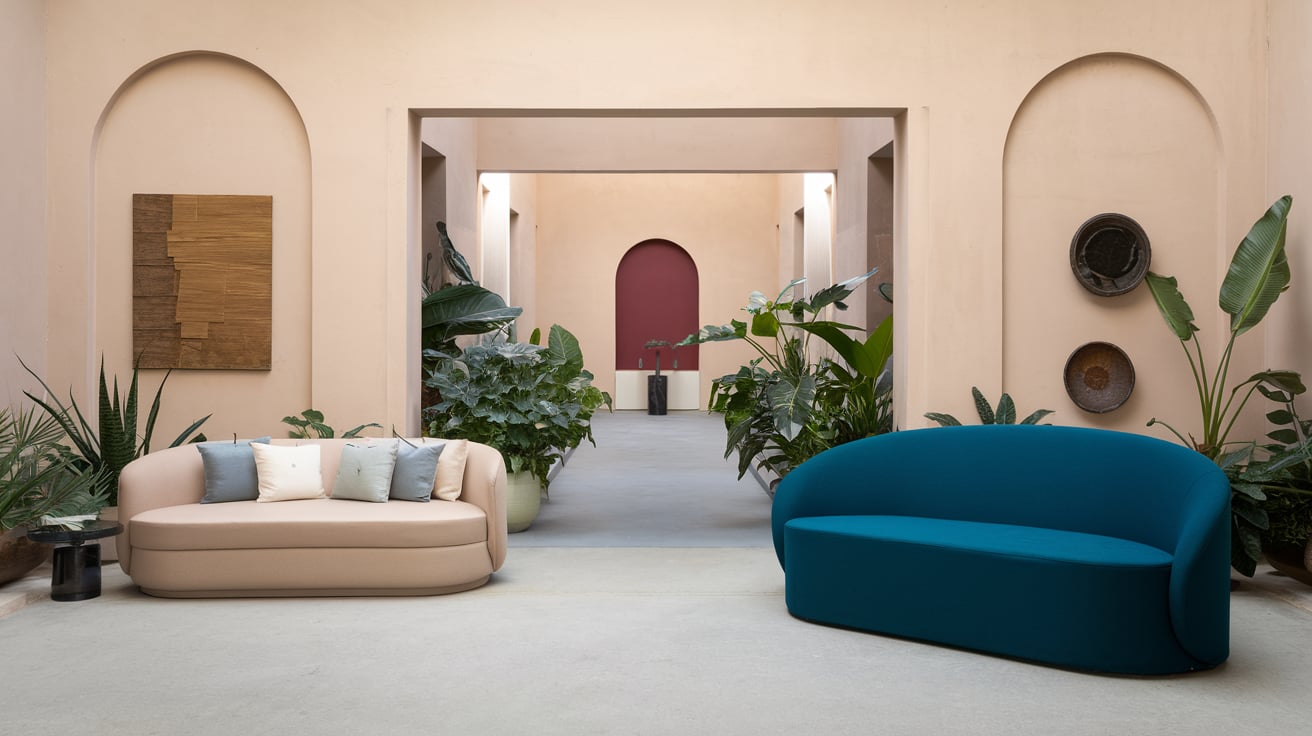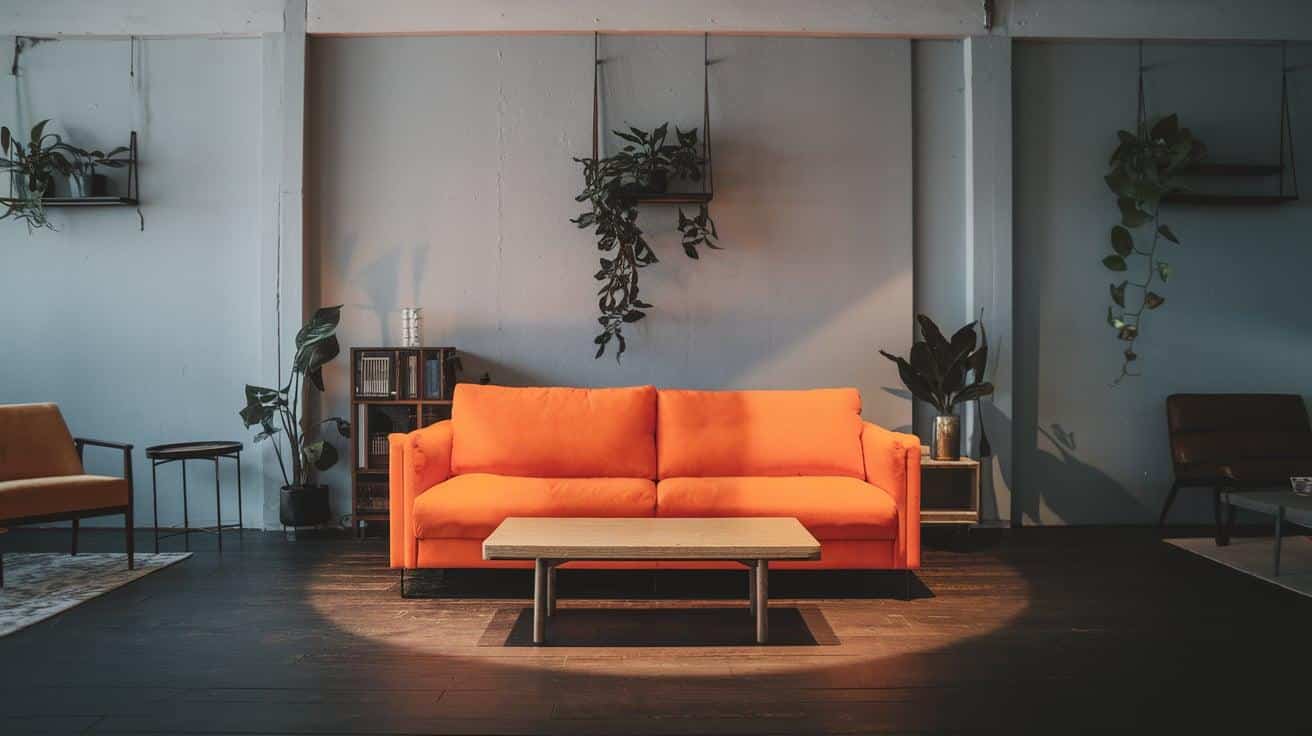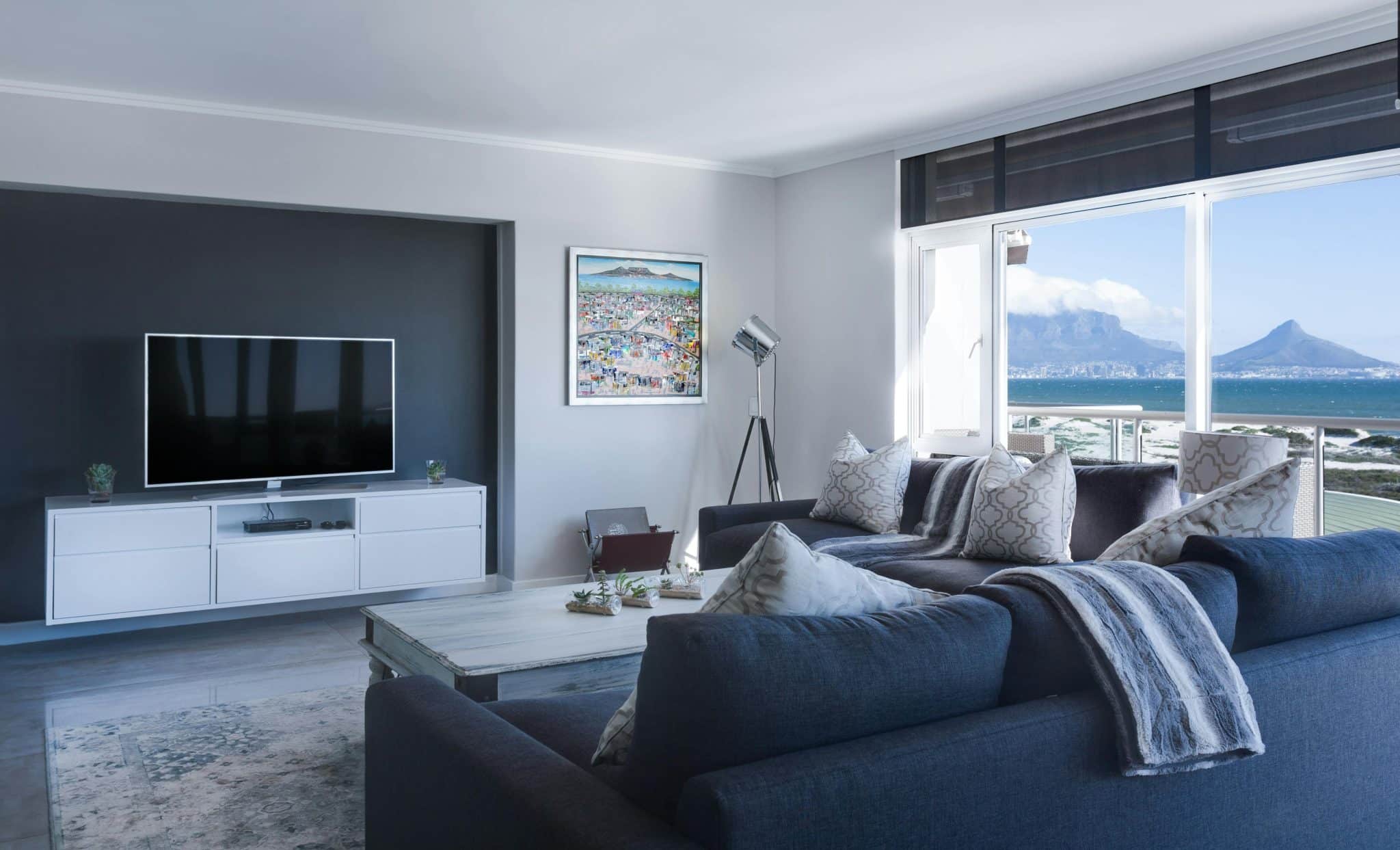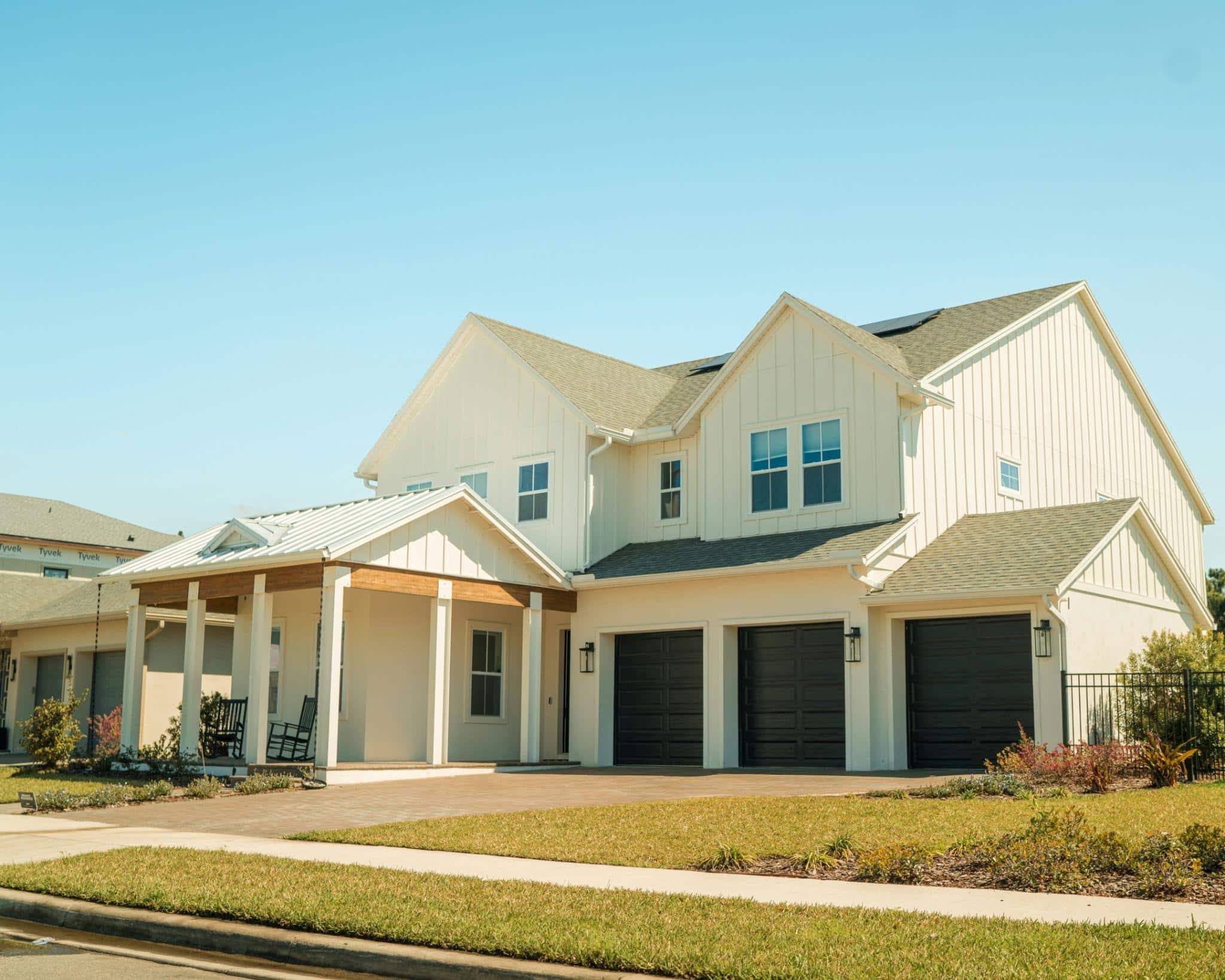Did you ever walk into a room and instantly know where to look? That’s the power of a focal point in design.
I’m fascinated by how your eye naturally gravitates to a standout element when you enter a space. Without this visual anchor, designs feel chaotic and confusing, leaving viewers unsure where to focus their attention.
This uncertainty creates a problem many designers face: how to create designs that don’t just look good but actually communicate effectively.
A well-executed focal point solves this by directing attention exactly where you want it, creating harmony and purpose in your design. It’s the difference between a forgettable layout and one that makes a lasting impression.
In this article, I’ll show you how to create powerful focal points that alter your designs from scattered to striking.
What Is a Focal Point In Design?
- A focal point is that magnetic element in your design that catches the eye first and holds attention. It’s like the star of the show, while everything else plays supporting roles.
- Think of it as the visual equivalent of someone shouting in a quiet room, impossible to ignore. When you look at a painting, website, or interior space, your eye naturally searches for something to latch onto.
- That’s what a focal point provides: a resting place for wandering eyes.
- Focal points work because our brains are wired to create order from chaos. We instinctively look for hierarchy and meaning in what we see. A strong focal point satisfies this need by telling viewers, “Start here. This matters most.”
- The best focal points don’t just grab attention; they guide it purposefully through the design. They create a visual journey, leading viewers from the primary element to secondary points of interest in a deliberate sequence that communicates your message clearly and effectively.
Why Focal Points are Essential To Design
Focal points are essential in design because they create a sense of order, draw attention to key elements, and guide the viewer’s eye, enhancing the overall visual experience.
1. Creating Visual Interest and Harmony
A focal point provides your eye with a point of focus. It’s like meeting the host at a party before mingling with everyone else. Without this anchor, designs feel scattered and overwhelming. With it, everything else falls naturally into place.
The difference between a forgettable design and one that captivates is often just one well-placed focal element.
2. Helping to Balance the Overall Layout
Balance doesn’t mean symmetry. A bold focal point can actually make asymmetrical designs feel right. It’s the counterweight that lets other elements breathe without the whole thing tipping over visually.
Even the most complex designs become approachable when there’s a clear visual hierarchy guiding the way.
3. Guiding the Flow and Energy of a Space
Good focal points aren’t bossy; they’re more like friendly tour guides. They welcome you in, then subtly direct your journey through the design, creating a natural path for your eyes to follow.
Your eyes will always follow the path of least resistance. A smart designer controls this journey from start to finish.
4. Enhancing the Storytelling Aspect of the Design
Every design tells a story. Your focal point is the opening line; it sets the tone and gives context for everything that follows. It’s what helps people remember your design long after they’ve seen it.
The most powerful designs don’t just look good; they make you feel something the moment you see them.
Identify What Your Design Focal Point Is
Finding your focal point isn’t rocket science; it’s about making smart choices that serve your space.
How to determine the main element of a space
- Ask yourself, “What do I want people to notice first?” Maybe it’s that gorgeous vintage sofa, a striking piece of art, or even a dramatic window view. Your focal point should be something that naturally draws attention through size, color, shape, or placement.
- The trick is to pick something interesting enough to command attention but not so busy that it becomes visual noise.
The best focal points often reveal themselves when you walk into a room and notice where your eyes land without even trying.
Aligning focal points with the purpose and function of the space
- Your focal point should make sense for how you actually use the space. In a living room, maybe it’s the fireplace where people gather.
- In a bedroom, probably the bed. In an office, perhaps your desk or an inspiration board. Let the room’s purpose guide your choice.
When your focal point supports what happens in the space, you create a design that not only looks good but also enhances daily life.
Common Focal Point Mistakes That Are Killing Your Design
Even the best designers sometimes trip up on focal points. Here are the mistakes I see most often:
1. Overcrowding the Space with Multiple Focal Points
When everything is special, nothing is. Too many statement pieces fighting for attention create visual chaos. Your room shouldn’t feel like a talent show where every performer is trying to be the star. Pick one main attraction and let everything else play a supporting role.
I once walked into a living room with a bold fireplace, dramatic chandelier, statement wall art, and a vibrant area rug. My eyes didn’t know where to rest, and the space felt stressful rather than welcoming.
2. Neglecting the Scale and Proportion of Focal Elements
Size matters! A tiny picture above a massive sofa looks lost, while an oversized coffee table in a small room feels cramped. Your focal point should be proportional to the space it occupies, substantial enough to command attention, but not so dominant that it overwhelms.
That perfect statement piece from the store might look completely out of place in your actual space – always measure and visualize before making a commitment.
3. Ignoring the Natural Flow of The Room,
Focal points fight a losing battle when placed where no one naturally looks. Consider how people enter and move through the space.
The focal point should be visible from the entry point and positioned where eyes naturally land, not hidden in corners or behind furniture.
A beautiful feature wall is wasted if it’s positioned so that people only see it when they leave the room.
Creating Focal Points in Different Rooms
Every room deserves a star. Here’s how to spotlight the right elements in each space of your home.
| Room | Focal Point Elements | Key Considerations |
|---|---|---|
| Living Room | Statement furniture, feature wall, sofa in bold color, fireplace, large artwork, media wall | Position the focal point where it’s visible from the entry point |
| Kitchen | Kitchen island, pendant lights, open shelving, colorful range or backsplash | Use distinctive lighting or showcase dishware on open shelving |
| Bedroom | The bed is a central element, striking headboard, dramatic wall treatment, and pendant lights. | Balance nightstands, but let the bed command attention |
| Office | Desk arrangement, storage units, artwork, gallery wall, large artwork | Place the desk facing the room, not a wall, and include inspiring artwork |
Make Your Focal Point Impossible to Miss
Make your focal point pop with these simple but powerful techniques that anyone can use.
1. Highlight with Color, Texture, and Smart Lighting
- Use bold colors to make important elements stand out instantly
- Layer in texture through natural materials like wood, stone, or fabric
Aim direct lighting at your focal point. Spotlights, sconces, or pendants can make your objects glow and command attention, even after dark.
2. Clear the Stage with Minimalism Around Focal Areas
- Remove clutter around your focal point so it has breathing room
- Keep decor nearby simple and subdued
Remember that what you remove is often as important as what you keep. Negative space creates a frame that highlights rather than competes.
3. Create Visual Tension Through Contrasting Elements
- Place smooth surfaces next to textured ones
- Pair light elements against dark backgrounds for maximum impact
- Mix design styles, strategically modern with vintage or organic shapes, with geometric forms
These intentional contrasts pull the eye naturally toward your focal point while keeping the design fresh and interesting over time.
Wrapping It Up
Strong focal points distinguish forgettable spaces from rooms that leave lasting impressions. By choosing one standout element and supporting it with thoughtful color, lighting, and placement, you create spaces that communicate clearly and feel purposeful.
Remember the key principles: Select a single star, keep supporting elements simple, and honor the room’s natural flow. Avoid the common pitfalls of multiple competing elements or poor proportions.
When you master focal points, you gain control over how people experience your spaces. Your designs will guide visitors naturally, creating rooms that feel both organized and inviting.
What focal point will you highlight in your next design project?
Frequently Asked Questions
1. Why Is Focal Point Important in Art?
Focal points in art direct viewer attention, create visual hierarchy, and guide the eye through the composition.
2. Why Is a Focal Point Important in Landscapes?
Focal points in landscapes give the viewer a clear place to look first. They create order in natural scenes, prevent visual confusion.
3. Why Is It Important to Have a Focal Point in Your Display?
A focal point in your display grabs attention, creates visual order, and guides viewers to what matters most.















